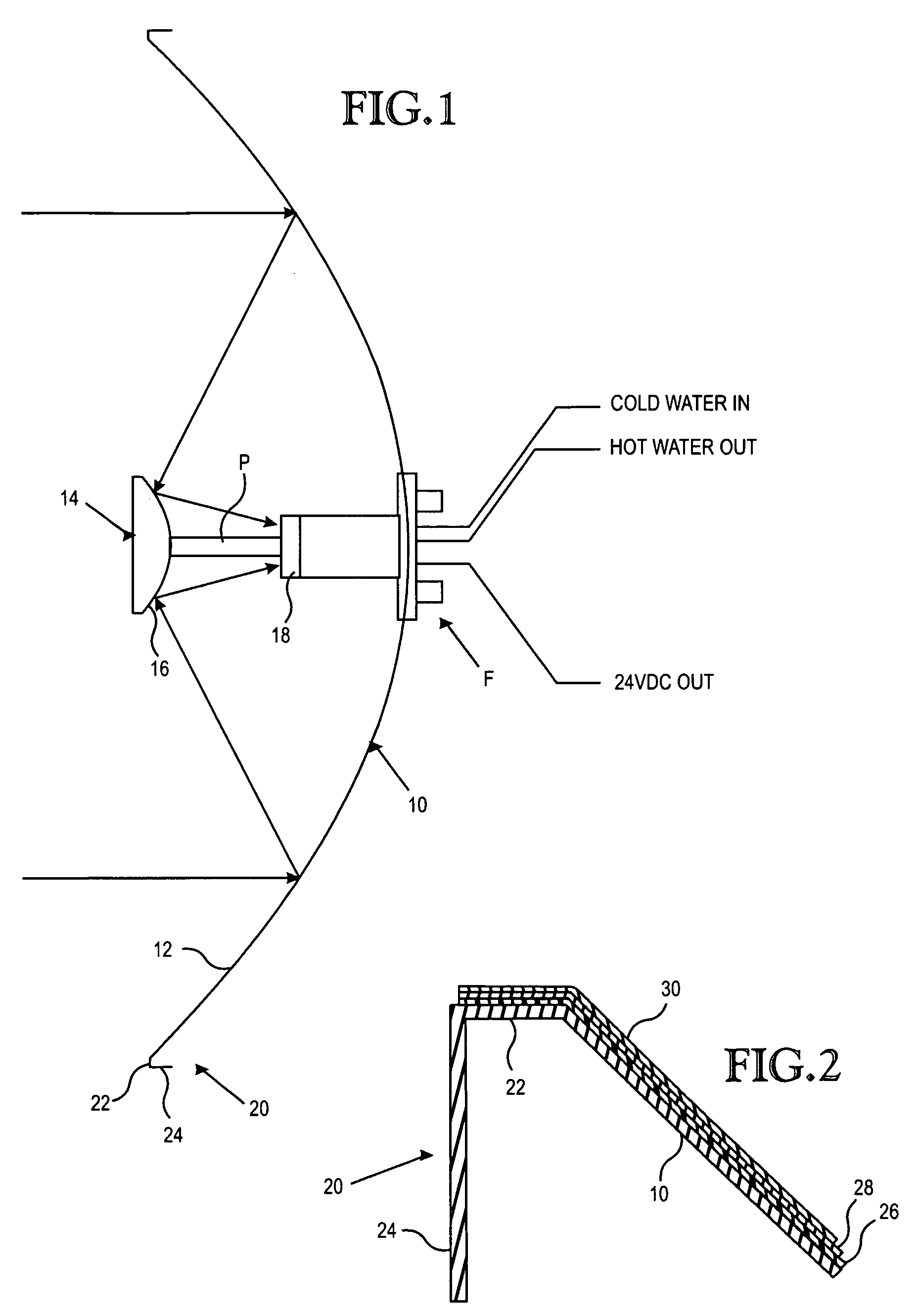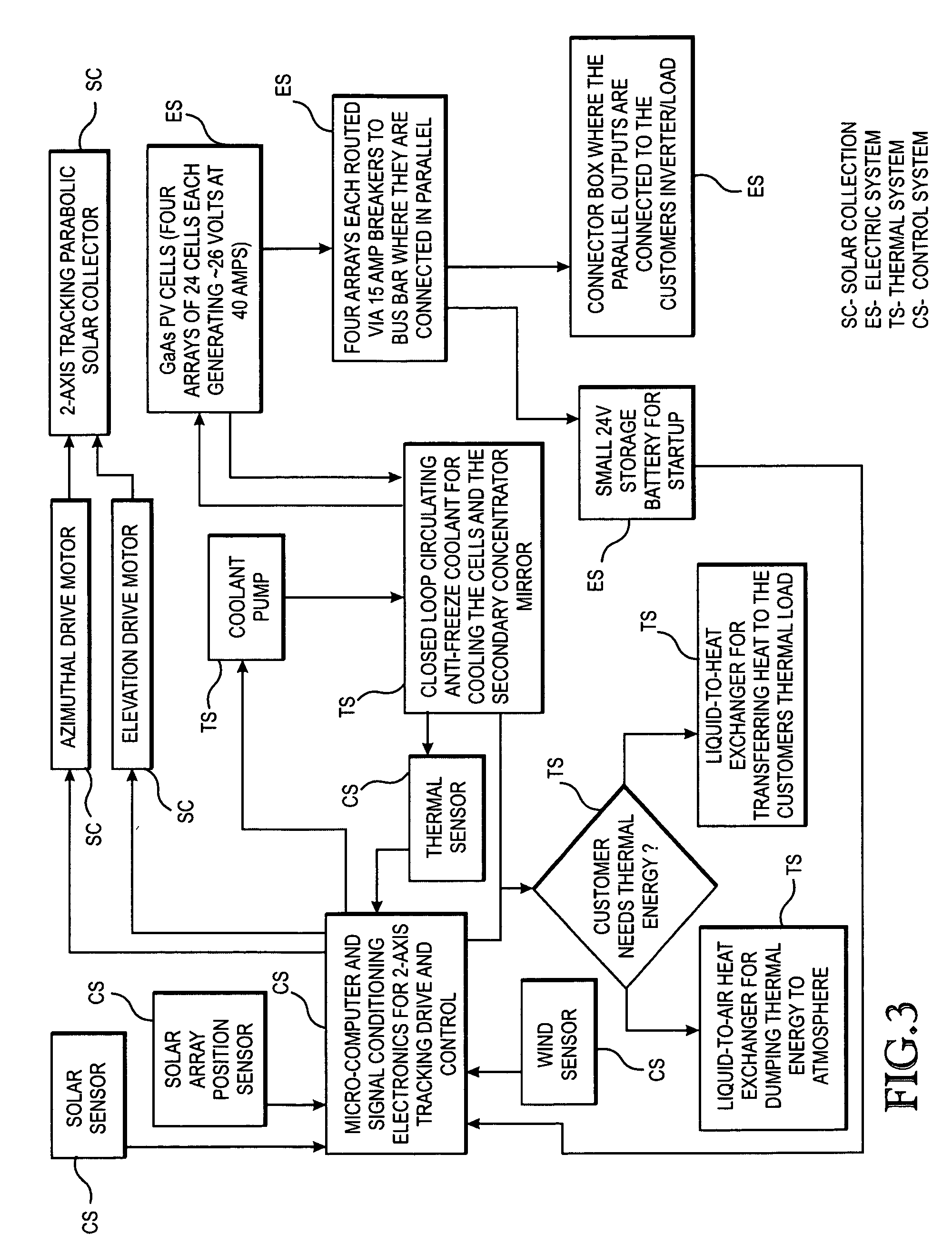Conversion of solar energy to electrical and/or heat energy
- Summary
- Abstract
- Description
- Claims
- Application Information
AI Technical Summary
Benefits of technology
Problems solved by technology
Method used
Image
Examples
Embodiment Construction
[0045]FIG. 1 is a schematic view of the optical components of the illustrated embodiment of the invention. It comprises a primary mirror 10, a secondary mirror 14 and an optical concentrator 18. Primary mirror 10 is a concave / convex dish that has a specular surface 12 on its concave side. Secondary mirror 14 is a concave / convex dish having a specular surface 16 on its convex side. The convex side 16 of mirror 14 confronts the concave side 12 of the mirror 10. The concave specular surface 12 is preferably parabolic and the specular surface 16 is generally hyperbolic. The substantially parabolic surface 12 is shaped to focus axially collimated sun rays to a focus point co-planar to its rim 20. This focal point is coincident with the virtual focal point of a generally hyperbolic specular surface 16 of the secondary mirror 14. Specular surface 16 is constructed and positioned to concentrate the solar energy that it receives from the primary mirror surface 12 and concentrate it onto an a...
PUM
 Login to View More
Login to View More Abstract
Description
Claims
Application Information
 Login to View More
Login to View More - R&D
- Intellectual Property
- Life Sciences
- Materials
- Tech Scout
- Unparalleled Data Quality
- Higher Quality Content
- 60% Fewer Hallucinations
Browse by: Latest US Patents, China's latest patents, Technical Efficacy Thesaurus, Application Domain, Technology Topic, Popular Technical Reports.
© 2025 PatSnap. All rights reserved.Legal|Privacy policy|Modern Slavery Act Transparency Statement|Sitemap|About US| Contact US: help@patsnap.com



